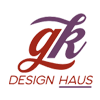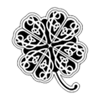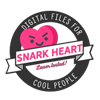Best Materials for Beginners

Starting out with laser cutting and engraving can feel overwhelming — but choosing the right materials makes a huge difference. Some materials are more forgiving, easier to cut, and offer great results even if you’re still perfecting your settings and designs.
Here’s a guide to the best beginner-friendly materials:
Baltic Birch / Birch Plywood
Why it’s great:
Affordable, strong, and easy to cut.
Available in thin sheets (1/8″, 1/4″) perfect for beginner projects like boxes, signs, ornaments, and decor.
Minimal voids inside the layers, which means fewer unexpected burns or cut failures.
Tips:
Light sanding after cutting gives a super clean finish.
Cast Acrylic Sheets
Why it’s great:
Cuts cleanly with beautiful, polished edges.
Available in lots of colors, finishes (glossy, matte, frosted), and thicknesses.
Perfect for signage, jewelry, awards, and keychains.
Tips:
Make sure you are using cast acrylic (not extruded) for the best cut and engrave quality.
Use extruded acrylic for projects like boxes and frames. It will smell like a nail salon, but is a cheaper cost than cast.
Leave the protective paper/masking on during cutting to prevent scorch marks.
Natural Leather (Veg-Tan)
Why it’s great:
Engraves beautifully with high detail.
Great for wallets, key fobs, patches, and custom goods.
Tips:
Only use vegetable-tanned leather — most chrome-tanned leather is unsafe for lasers. Look for leather marked laser safe for chrome tanned.
Ventilate properly — leather cutting can create strong odors.
Cardstock & Paper
Why it’s great:
Extremely inexpensive for practice.
Perfect for learning how different power and speed settings affect cutting and scoring.
Ideal for custom cards, stencils, packaging, and paper art.
Tips:
Watch your laser closely when cutting paper — it can catch fire easily if settings are too strong.
Use low power and high speed for clean cuts without burning edges.
MDF (Medium-Density Fiberboard)
Why it’s great:
Cheap, flat, and cuts very consistently.
Useful for signs, prototypes, and testing structural designs.
Tips:
MDF creates a lot of smoke and fine dust — make sure your ventilation is strong.
Materials to Approach Carefully as a Beginner
Hardwoods (like oak, maple): Beautiful but can be trickier due to density and grain variability.
Glass: Only engravable, not cuttable; requires more precise settings.
Metal: Generally requires a fiber laser (or coating sprays) — not ideal for CO₂ beginners.
Vinyl/PVC: Never cut these! They release toxic chlorine gas when lasered.
Final Pro Tip:
Start Simple, Then Experiment
Begin with a few proven, laser-safe materials to build confidence. As you get comfortable with settings and techniques, you can branch out into more challenging materials and mixed-media projects!
Testing small scrap pieces is a smart way to dial in your skills without risking a full sheet of expensive material.




